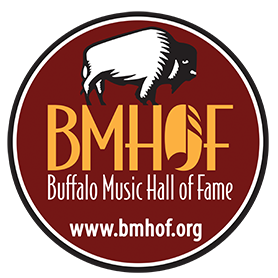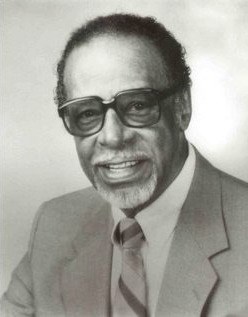





CHARLES "CHOLLY" ATKINS - BMHOF CLASS OF 1999
Lifetime Acheivement Award Dancer Choreographer

Born Charles Sylvan
Atkinson in Pratt City, Alabama, on September 13, 1913, Cholly Atkins's life
was steeped in rhythm from the very beginning. His mother, Christine Woods,
instilled in him a love for music and dance, which blossomed in his early
years. By the age of ten, he was already winning Charleston contests,
showcasing his natural talent and infectious energy.
Atkins's family moved to
Buffalo when he was seven, opening doors to new opportunities. Inspired by a
schoolteacher who introduced him to cakewalks, struts, and acrobatics, Atkins
honed his skills, eventually landing gigs as a singing waiter at age 16, and
dancing bootblack. The 1930s saw Atkins's career take flight. He formed the
vaudeville act "The Rhythm Pals" with William Porter, touring across
the country and captivating audiences with their dynamic routines. Around this
time, he also adopted the stage name "Cholly," inspired by a popular
newspaper columnist. Moving to New York City, he was a choreographer and dancer
with the Cotton Club Boys in Cab Calloway's Review at the Apollo Theatre.
Through the 50's he toured with everyone, including: Count Basie, Lionel
Hampton, Billy Eckstein and Johnny Otis.
World War II interrupted
Atkins's budding career, but he returned with renewed determination. He joined
forces with the legendary tap dancer Honi Coles, forming the duo "Atkins
& Coles." Their electrifying blend of classic tap and innovative
"soft-shoe" steps took the dance world by storm. The pair debuted at
the Apollo Theater in Harlem and quickly soared to international fame. They
graced the stages of prestigious venues, collaborating with jazz icons like
Louis Armstrong, Count Basie, and Cab Calloway. Atkins & Coles even made
their mark on Broadway, dazzling audiences in the musical "Gentlemen
Prefer Blondes."
By the mid-1950s, the
popularity of tap began to wane. Atkins transitioned to choreography, finding a
new home in the burgeoning world of rhythm and blues. In 1965, he landed a
pivotal role as the house choreographer for Motown Records in Detroit. He
crafted iconic routines for some of the label's biggest stars, including The
Supremes, The Temptations, Gladys Knight & the Pips, and Smokey Robinson
& the Miracles. Atkins's choreography became an integral part of the Motown
sound, adding a visual dimension that captivated audiences worldwide.
He continued to
choreograph for various artists and productions throughout the 1970s and 1980s,
even winning a Tony Award for his work in the 1988 Broadway revival of
"Black and Blue." In 1993, he received a National Endowment for the
Arts fellowship, allowing him to travel to colleges and universities, igniting
a new generation of dancers and choreographers.
Cholly Atkins passed
away in 2003, leaving behind a legacy that continues to inspire.